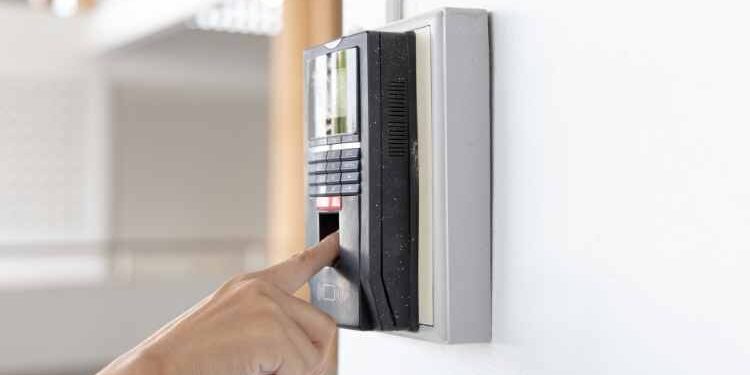Biometric time clocks are effective devices for monitoring and managing hourly wages precisely. They use fingerprint sensors or other biological feature assessments to validate data, for example, iris pattern verification.
Biometric time clocks are famous because they have enhanced the efficiency and quality of traditional verification methods, such as employee PIN or ID card verification.
The traditional attendance tracking techniques may seem convenient, but they are also easy to replicate, increasing the hazards of unlawful entrance and data misuse. On the other hand, Biometric systems are regarded as one of the most efficient information protection measures and are vastly more convenient.
Global businesses are continually beginning to integrate this technology into their workplaces. Statistics show that they are already seeing a decrease in overt and covert labor expenditures as well as an increase in the company’s sustainability.
SmartBarrel is an example of one company that has built an advanced, easy-to-install time-tracking biometric clock for the construction industry.
We’ve prepared answers to frequently asked questions to benefit businesses considering biometric time clocks. So, let’s dive in.
How does it work?
A biometric time clock employs a scanner to compare an employee’s fingerprints, iris pattern, or other facial features to already present data in its database. In addition, these clocking terminals use comprehensive fingerprint measures to verify the person’s authenticity clocking into work.
It also uses this technology to manage employees’ shifts and track which office locations they have visited.
Key features of biometric time clock
Here are some key features of an advanced biometric time clock:
● Built-In automatic data capturer
If you are a businessman, you must have the idea that payroll preparation and attendance data calculation can take many days and even weeks.
However, with biometric time clocks, payroll for hundreds of employees may be created and finalized in hours. In addition, employers can easily download data from the biometric system onto a USB hard disc and forward it to the appropriate department for approval.
● Capability
Biometric time clocks can register and store up to 10,000 fingerprints, and some advanced clocks can even take a photo of the employee and the prints for added verification.
● Independent of weather
Biometric time clocks can also work in any weather condition and therefore do not require extra cooling to operate appropriately. In addition, biometric technology can determine moist, greasy, and even dirty fingerprints and check if they accurately match the records.
● Provides security
Biometric time clocks are highly beneficial in avoiding security breaches in staff-only areas. The biometric technology only allows access if there is a match. Because it is difficult to counterfeit the biometric data from these clocks, anyone whose fingerprints or other information are not in the system will not be allowed to enter.
● Glitch-free system
Biometric time clocks provide glitch-free systems. It improves employee punch-in efficiency while also ensuring error-free entrance to suitable locations.
● Flexibility
Most biometric time clocks are tiny and compact and can be deployed anywhere in the office, which aids in office decluttering.
Are biometric time clocks easy to set up and use?
Biometric time clocks are simple to install and use. Although some may believe that modern biometric time clocks are difficult to use, that’s not the case.
Traditional time clock systems are significantly slower and more challenging than advanced scanning time clocks. A biometric time clock requires no particular technical knowledge to operate. A worker in any sector with any tech knowledge may rapidly learn how to clock in and out using a biometric system.
What are the requirements for establishing a biometric time clock?
To begin employing a biometric clocking device in a company, you first have to register all employees’ biometric information on the device. Then, the employee must present his particular feature, be it the eye’s iris or fingers, to the terminal two or more times in order to record that unique image. Biometric time clocks save these critical features as templates for the employee’s biometric profile.
Once the system saves the info, employees can begin clocking in and out of work using the system.
What can a biometric time clock do for your company?
Biometric time clocks assist entrepreneurs in regulating their workplace’s timeliness and identifying employees who violate company etiquette. However, this time attendance system implies more benefits than ensuring people get to work on time.
● No buddy-punching
Since nobody can replicate someone else’s fingerprint, it helps prevent employees from clocking in for each other. This approach prevents the possibility of buddy punching and time theft.
● Money and time saving
Payroll personnel who employ the old payroll system of PIN and timesheets are prone to inaccuracy. They may overestimate overtime pay or pay the incorrect tax rates, resulting in an excessive increase in expenses.
Biometric time attendance systems automate punch times while lowering labor expenses and margins of error.
Furthermore, with biometric time trackers, management could eliminate the need for ID cards or PINS, allowing employees to correctly and quickly report their attendance.
● An intuitive method
Biometric time clocks assist firms in taking the lead toward more sustainable business practices by reducing the need for HR managers and other overt and covert expenses.
● Remote accessibility
Thanks to biometric time clocks, employees can sign in to work via their mobile phones. For example, employees can log in while delivering deliveries or going to a client’s home to conduct services.
Management may monitor an employee’s work time and ensure they aren’t slogging away merely because HR isn’t present to watch them. This is a fantastic solution for businesses with staff constantly on the move.
A biometric clock, which works nicely with mobile devices, enables businesses to watch staff, even if they are far away from the office.
Final thoughts
Businesses can profit from installing biometric time clocks, which will reduce the workload on HR and finance departments. First, however, organizations must secure this data, protect it from misuse, and comply with state and federal data standards and privacy laws.
